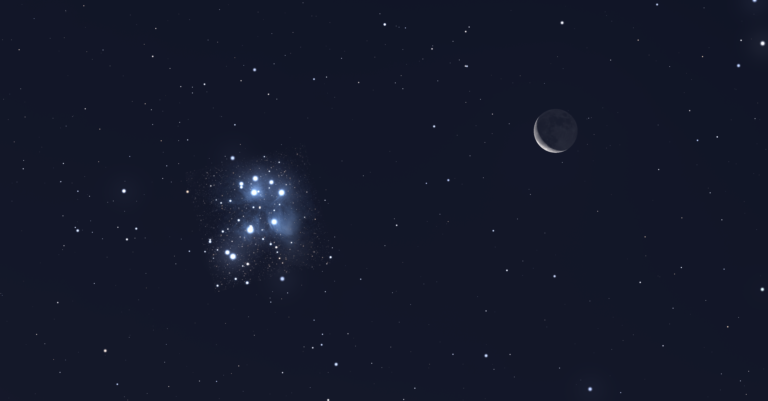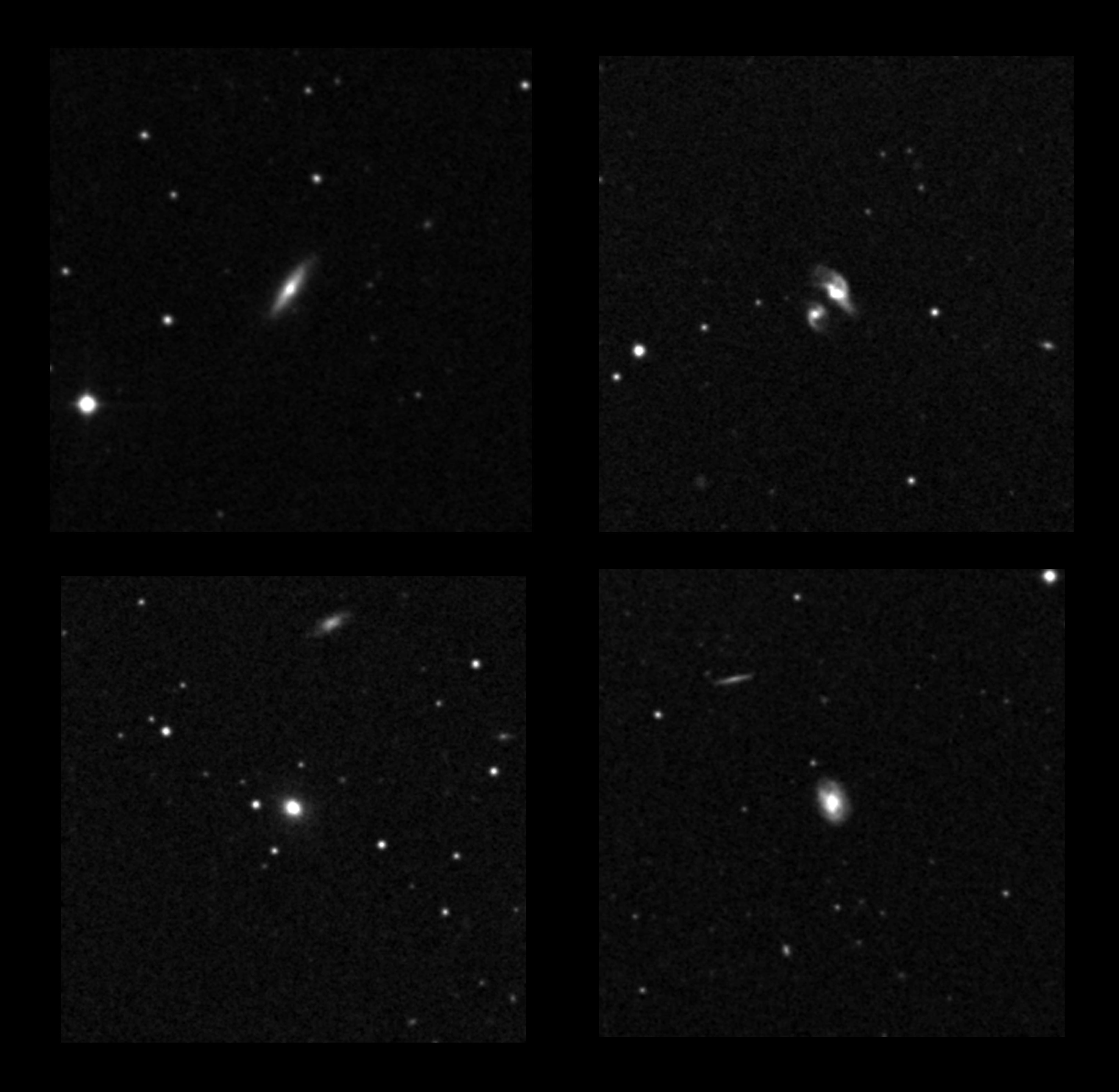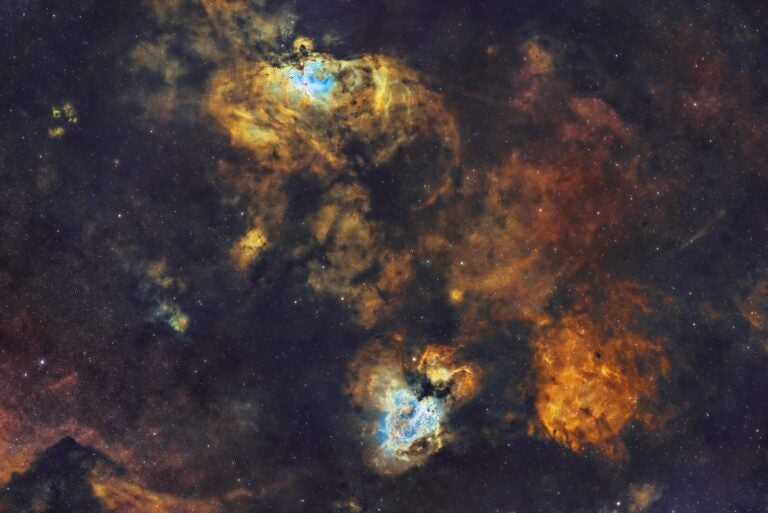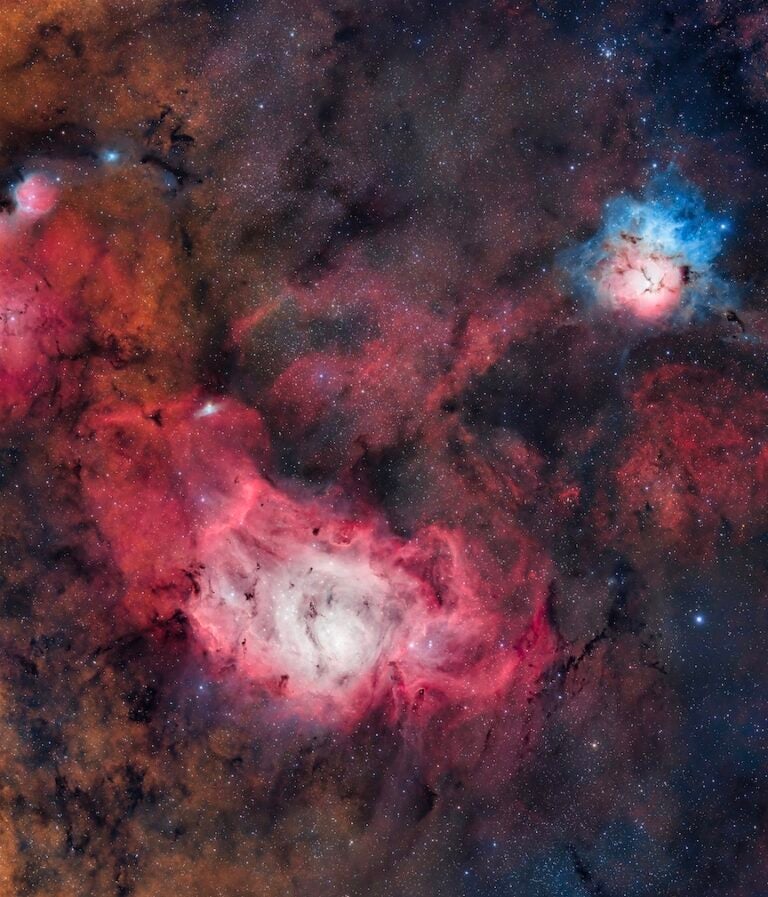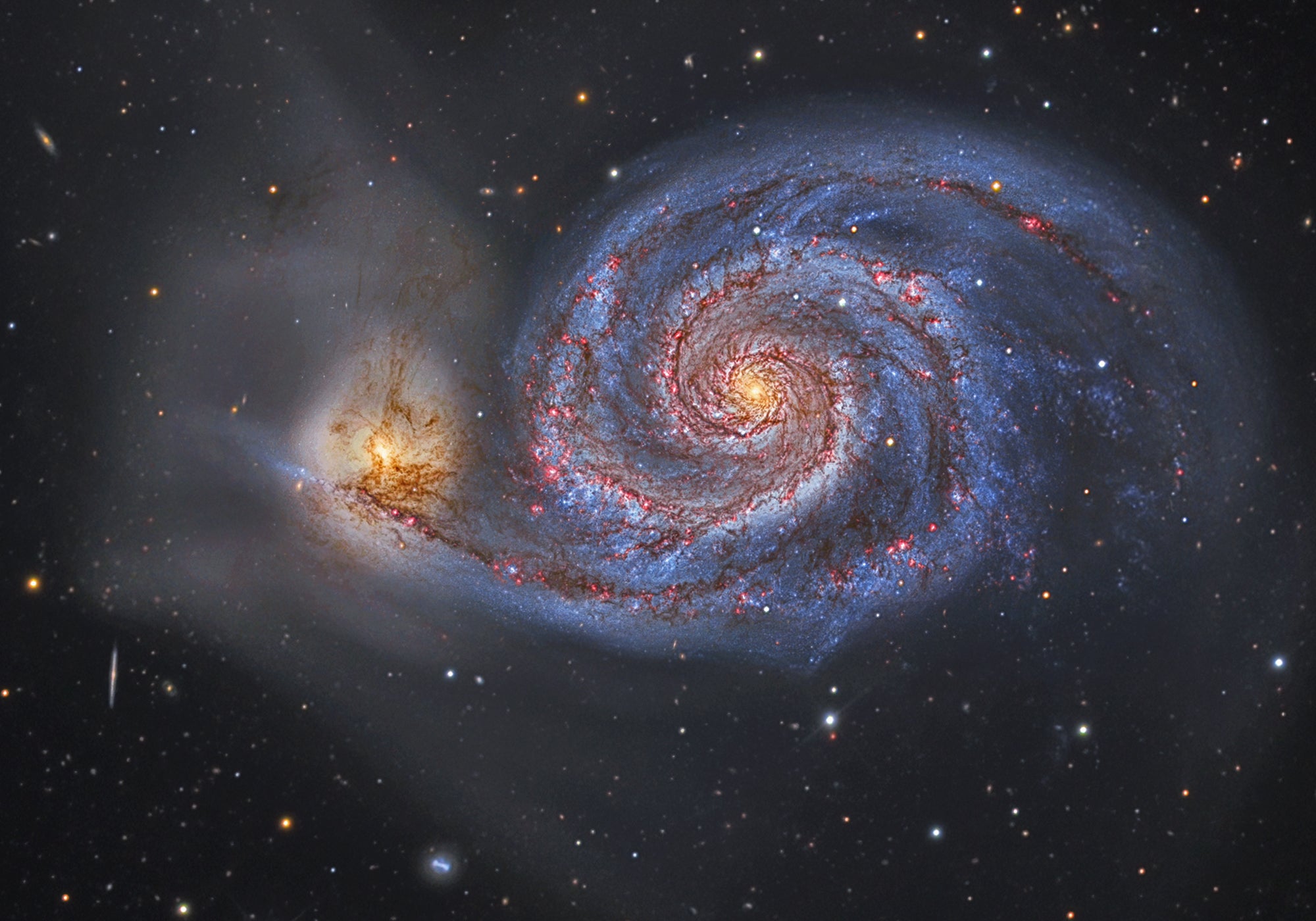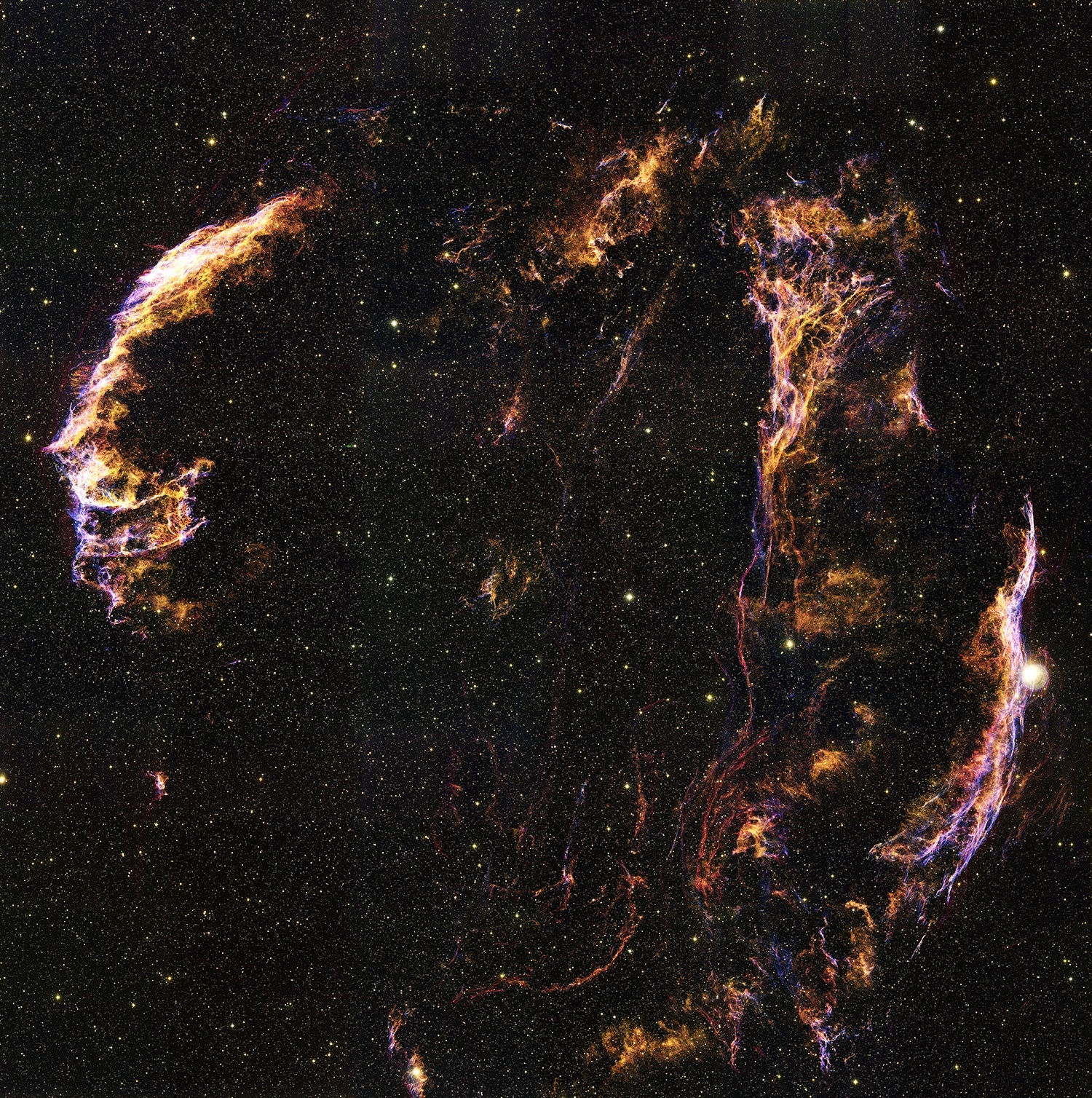
The Cygnus Loop is one of the most spectacular examples of a veiled stellar corpse that is accessible to small telescopes. Its visible streamers form the filamentary remains of an unknown supergiant star that erupted as a supernova some 5,000 to 8,000 years ago.
Most observers enjoy seeking out the Loop’s brightest segments, NGC 6992 and 6960. But did you know that the Loop’s lesser ghostly wisps also are within reach of small telescopes? The most conspicuous of them carries no proper classification. Known as Fleming’s Triangular Wisp, this phantom feature is one of the longest and most lacelike structures in the complex, and it may have contributed to the Loop’s popular moniker: the Veil Nebula.
Williamina Paton Stevens Fleming (1857–1911) discovered this 3°-long rivulet of nebulous streamers while examining photographic plates. Fleming was one of the most celebrated woman astronomers at Harvard College Observatory (HCO). Aside from recording stars for the Henry Draper Catalogue, her work led to the discovery of 10 novae, 52 nebulae (including the Horsehead Nebula in Orion, the White-Eyed Pea Nebula [IC 4593] in Hercules, and planetary nebula IC 2149 in Auriga), and 310 variable stars.
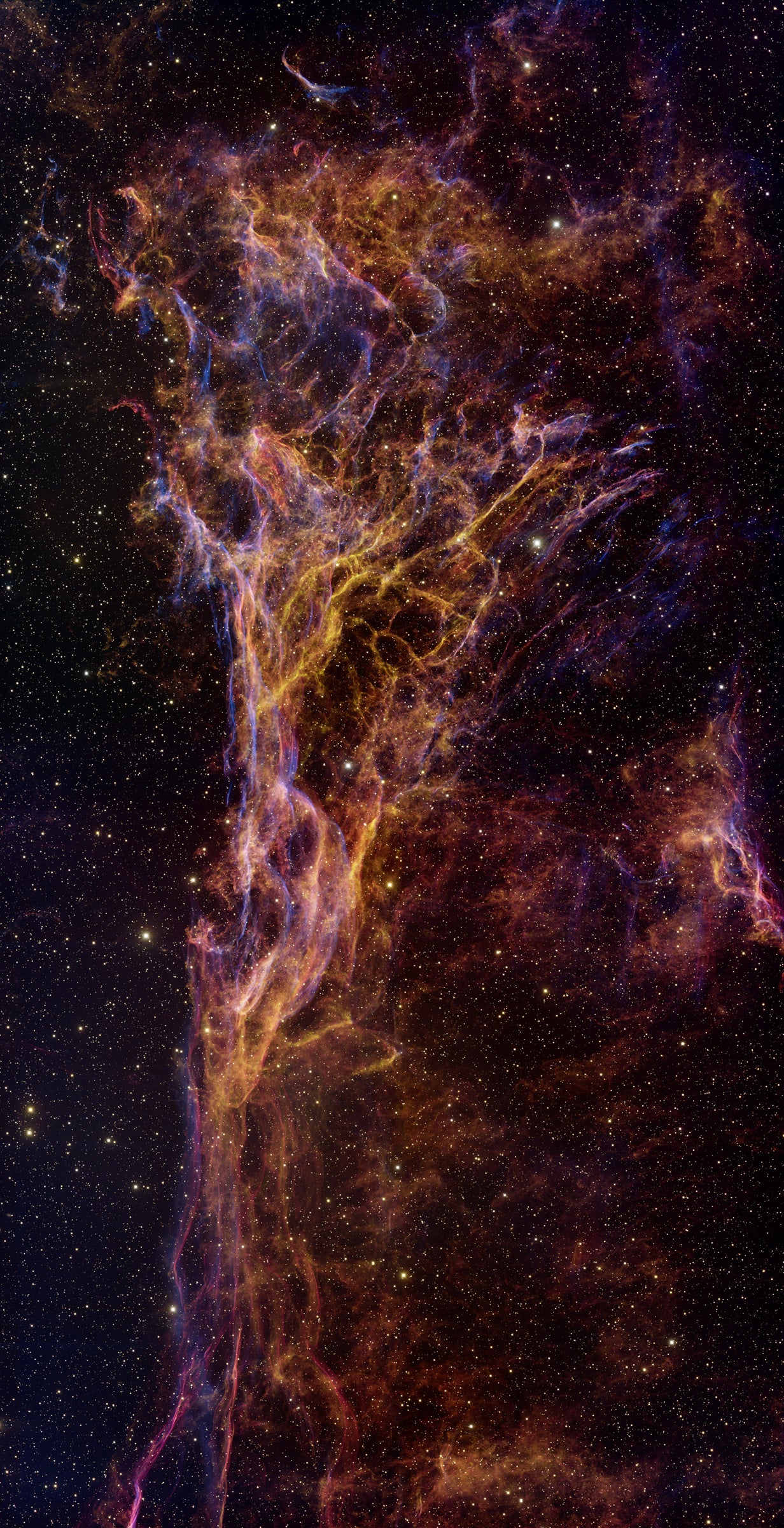
Fleming discovered the Triangular Wisp on Jan. 13, 1905, while examining a 240-minute exposure taken Sept. 2, 1904, at Harvard’s outpost in Arequipa, Peru, with the 24-inch Bruce Telescope. (The telescope was named after Catherine Bruce, who gifted the money for its purchase.) On the glass plate’s sleeve, Fleming refers to the find in the third person, writing: “Nebulosity marked by W. P. Fleming. Almost Complete Circle.”
HCO Director Edward C. Pickering announced Fleming’s discovery in Harvard Circular volume 111, dated Feb. 16, 1906: “From an examination of this plate, Mrs. Fleming found that the northern and perhaps southern ends of [NGC 6960 and 6992] are connected by faint nebulosity forming an irregular oval. A large triangular wisp of nebulosity extends southward, from the north preceding portion of this oval, and is much more conspicuous than the neighboring nebulae, NGC 6974 and NGC 6979.”
Pickering’s note clarifies that Fleming’s Triangular Wisp is not NGC 6979, as it is sometimes attributed today. Both Fleming’s original note and Pickering’s announcement also clarify that Fleming was the first person to detect the Cygnus Loop.
Through a small telescope, Fleming’s Triangular Wisp is a haunting spectacle. Its ghostlike visage floats between the braided fishhook of nebulous streamers to the east (NGC 6992/5 and IC 1340) and the bristling sweep of nebulosity known as the Witch’s Broom to the west (NGC 6960).
The visual challenge is to use moderate powers to detect filamentary structure in the triangular head. Can you trace the veil to its southern extreme, where it appears to curve westward? From a dark site, the entire inner arc is prominent enough to fool an unwary observer into believing that they have seen the Veil’s easternmost segment. The perceived dimensions of these fainter features are tentative because they tend to follow star streams, and it is hard to judge where the nebulosity ends and the star streams begin.
A veil seems like a fitting label for these nebulous streamers, and not just for its appearance: Bridal veils date to Roman times, when they were used not only in marriage but in death as a burial shroud — appropriate for the remains of a stellar corpse.
As always, send your observations and thoughts to sjomeara31@gmail.com.





